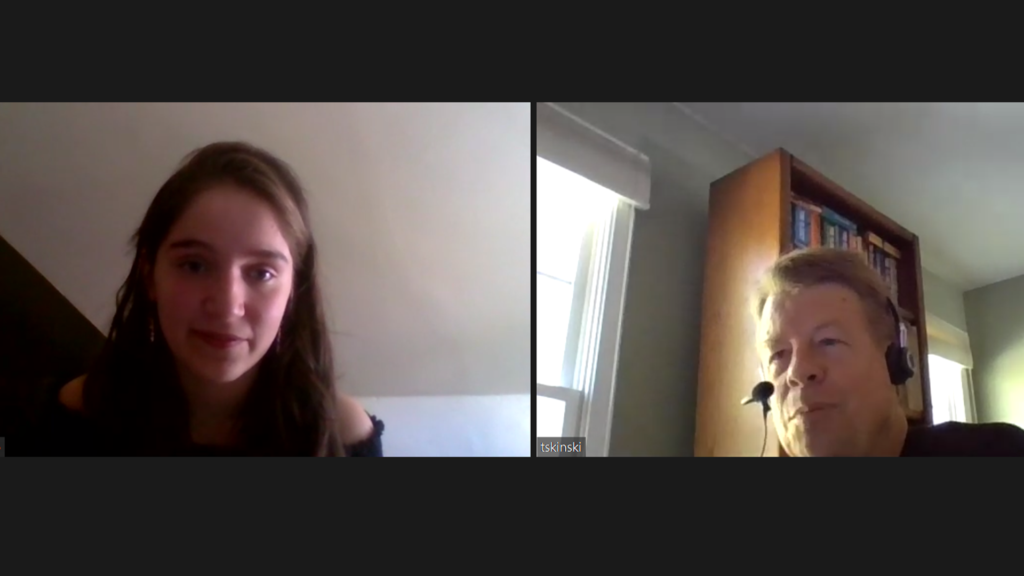Application created by summer intern rolls out across multinational company
By Stephen Wilson
Tim Skinski ’83 has crossed state lines and is shuttling over the Tappan Zee Bridge when he realizes that lunch in New Jersey may look different than it does in Connecticut. While both states are slowly opening back up, COVID dining restrictions vary.
Sitting outside an Italian restaurant in the industrial section of a tiny town is Rebecca Pantano ’21. As it starts to rain, she calls Skinski to let him know the restaurant has a tent.
Skinski has no intention of turning back. He is eager to finally meet, in person, the intern who designed an application that has been deployed in 60 labs across 40 sites at his multinational company.
Boehringer Ingelheim is the world’s largest research-driven, privately held pharmaceutical company, headquartered in Germany with 175 global affiliates on every continent (except Antarctica) and over 51,000 employees.
Skinski is the global director of information technology in chromatography services, so his team supports researchers and scientists with enterprise-level software and data platforms that adhere to rigorous compliance standards and regulations.
His team was managing a global systems upgrade that included numerous applications. He sought a Lafayette intern through the Gateway Career Center to help support application development.
Pantano interviewed for the role in March before the global pandemic shifted how the world learned and worked. Skinski’s company restructured quickly to adapt to the health crisis, so the on-site internship became remote.
Two days after classes ended, Pantano was working from her New Jersey home with two team members in Germany and one in Argentina.
 “I’m proud of how agile the team was and how quickly Pantano adapted to it and then helped take the assigned tasks to the next level,” he says.
“I’m proud of how agile the team was and how quickly Pantano adapted to it and then helped take the assigned tasks to the next level,” he says.
The tasks were more than a computer science major, or even a developer in the industry, may typically face.
Application developers usually fall into two camps: one that focuses on user-experience and develops at the front end; another that focuses on back-end coding and workflows.
Pantano worked on both sides.
And navigated the project in a manner that had her manage global time zones, so questions and requests to German team members had to be asked by 11 a.m. or else answers wouldn’t come until the next day.
She took an iterative approach to the development by building, testing, gathering feedback, and refining.
Pantano learned lots from the experience: a new programming language, detailed use of project tracking tools like Jira, and global time and resource management.
“What she did and how she did it in three months is impressive,” Skinski says. “I really give her credit for being flexible to the circumstances and grabbing this project and running with it.”
The team gives her credit too. While it is not called the Rebecca application, they do reference her name each time the application is discussed in meetings.
End users have been pleased too with its global rollout, using it quickly and easily to access the data they need.
Seems a project worthy of a three-state drive on a rainy day to eat fabulous Italian food in a small town—a congratulatory and celebratory way to first meet.
 “I’m proud of how agile the team was and how quickly Pantano adapted to it and then helped take the assigned tasks to the next level,” he says.
“I’m proud of how agile the team was and how quickly Pantano adapted to it and then helped take the assigned tasks to the next level,” he says.